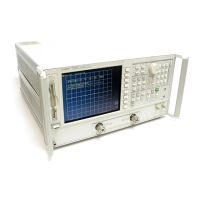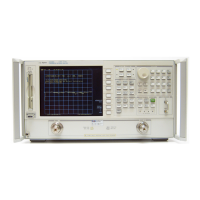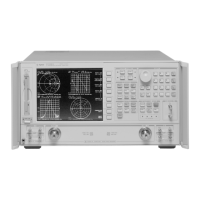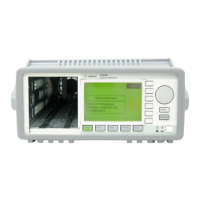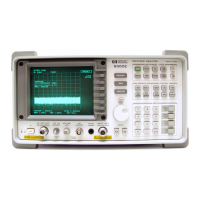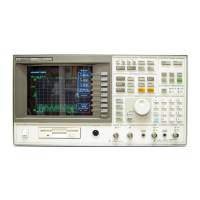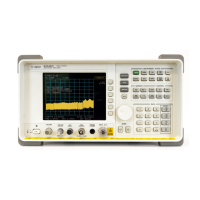5-7
Hardkey/Softkey Reference
Analyzer Functions
2) adds a new frequency band to the Ripple Limit list
which is indicated by the pointer >. The new frequency
band is a duplicate of the most recently selected frequency
band.
sets the GPIB address of the analyzer, using the entry
controls. There is no physical address switch to set in the
analyzer. The default GPIB address is 16.
sets the GPIB address the analyzer will use to
communicate with the external controller.
sets the GPIB address the analyzer will use to
communicate with an external GPIB disk drive.
sets the GPIB address the analyzer will use to
communicate with the power meter used in service
routines.
presents a menu for adjusting display intensity, colors,
and accessing save and recall functions for modified LCD
color sets.
leads to the beginning of the adjustment tests. These tests
generate correction constants that are used by the
analyzer.
retrieves the full frequency list sweep.
measures only one input, A or B, per frequency sweep, in
order to reduce spurious signals. Thus, this mode
optimizes the dynamic range for all four S-parameter
measurements.
adds or subtracts an offset in amplitude value. This allows
limits already defined to be used for testing at a different
response level. For example, if attenuation is added to or
removed from a test setup, the limits can be offset an
equal amount. Use the entry block controls to specify the
offset.
displays a dc or low frequency ac auxiliary voltage on the
vertical axis, using the real format. An external signal
source such as a detector or function generator can be
connected to the rear panel AUXILIARY INPUT
connector.
defines the standard type to be a load, but with an
arbitrary impedance (different from system Z0).
sets the sequence bit in the Event Status Register, which
can be used to generate an SRQ (service request) to the
system controller.
